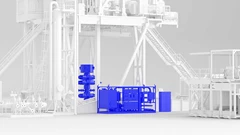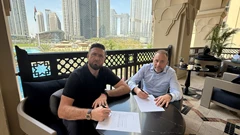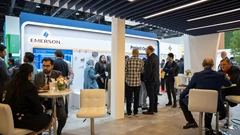Samsung Engineering begins Sarawak H2biscus green hydrogen and ammonia FEED project in Malaysia
Samsung Engineering, a world leading engineering solutions and project management company, has announced that the FEED contract for the Sarawak H2biscus green hydrogen and ammonia project in Malaysia was launched with a kick-off meeting with LOTTE CHEMICAL, Korea National Oil Corporation and Malaysia's SEDC Energy (Sarawak Economic Development Corporation Energy).
Samsung Engineering will execute the FEED for the green hydrogen plant with an annual capacity of 150,000 tons and a green ammonia conversion plant with a capacity of 850,000 tons in Sarawak, Malaysia, with expected completion in 2024.
As a part of the meeting, Samsung Engineering Executive Vice President & Head of Sustainable Solution Business Division Cheonhong Park, LOTTE CHEMICAL Division Manager Kim Yong-hak, Korea National Oil Corporation Team Leader Jang Jin-hwan, SEDC Energy President Robert Hardin, and other officials from each participating company reviewed major subjects and schedules related to FEED design progress, and shared strategies.
Samsung Engineering plans to derive a hydrogen production method optimised in terms of efficiency and economic feasibility by applying both PEM (polymer electrolyte membrane water electrolysis) and AEC (alkaline water electrolysis) technologies, which are representative water electrolysis technologies, at the FEED stage.
This H2biscus project is a project to produce clean hydrogen based on renewable energy in Sarawak, Malaysia and introduce it to Korea with the participation of Samsung Engineering, LOTTE CHEMICAL, Korea National Oil Corporation and SEDC Energy of Malaysia, launched in early 2022. The project has started and is on track, including signing a renewable power MOU with the Sarawak Electricity Authority in September 2022.
Based on this FEED, a final investment decision (FID) will be made at the end of 2024. Once FID is approved, EPC is expected to begin right after at the end of 2024 and commercial production of hydrogen is expected for early 2028.
The alliance on this project predict that H2biscus will greatly contribute to achieving Korea's carbon neutrality goal and revitalising the hydrogen economy. Some of the clean hydrogen to be produced through this project will be used locally in Sarawak, and the rest will be converted to ammonia and brought into the country to be used in various forms. The Malaysian state of Sarawak plans to contribute to revitalising the local economy and implement a hydrogen economy in earnest through the successful development of the H2biscus project.
“We have taken the first step for carrying out the main project of the H2biscus project, which has great significance both domestically and internationally. We will successfully develop the project as well as the FEED, making H2biscus the role model for global hydrogen projects,” said Hong Namkoong, President and CEO of Samsung Engineering.
In the era of energy transition, Samsung Engineering is focusing on securing technology and business development in the hydrogen, ammonia, and CCUS fields addressing social challenges with technology and strengthen the foundation for mid- to long-term sustainable growth.
KEEPING THE ENERGY INDUSTRY CONNECTED
Subscribe to our newsletter and get the best of Energy Connects directly to your inbox each week.
By subscribing, you agree to the processing of your personal data by dmg events as described in the Privacy Policy.
More technology news

Baker Hughes beats Q1 forecasts but warns on tariff impact

Google deploys AI to strengthen electricity grids amid rising demand

SLB wins major Woodside Energy drilling contract for ultra-deepwater Trion project

Abu Dhabi’s ADQ and Energy Capital in $25billion deal to power data centres

Emerson finalises acquisition of AspenTech for $7.2 bn

Baker Hughes and Woodside Energy to develop small-scale decarbonisation solution

SLB electrifies well control with new technology to boost drilling safety

SmartSea and Digital Energy AI to offer innovative solutions for the maritime industry

Emerson showcases advanced automation technologies at EGYPES 2025
















